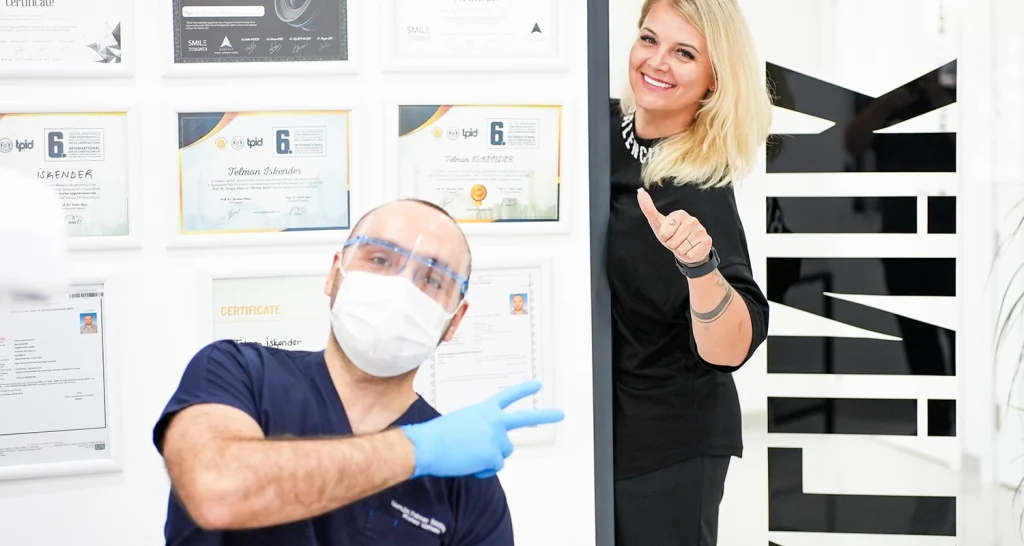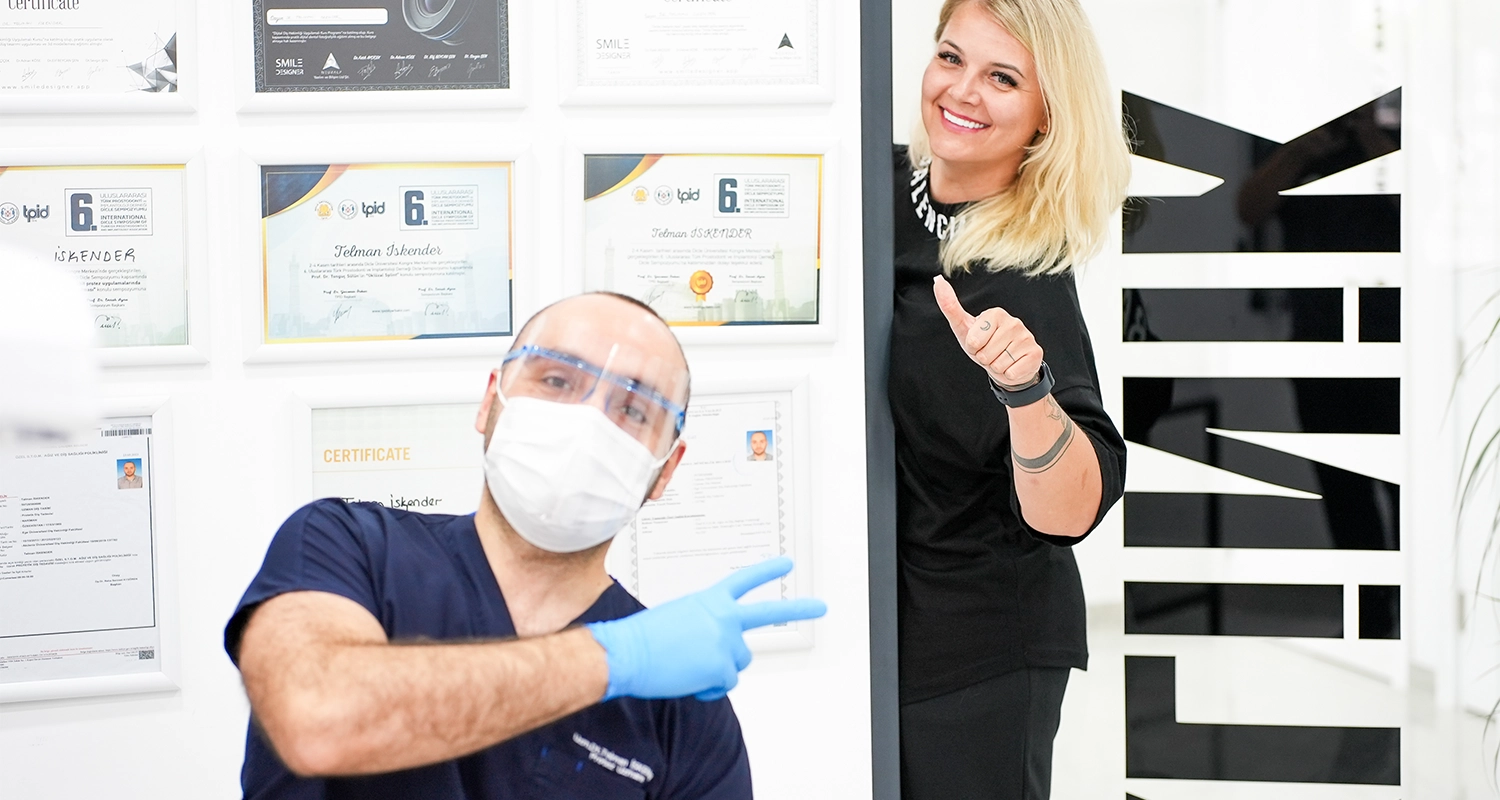Traditional Fixed Orthodontic Treatment
What is Classical Fixed Orthodontics?
Orthodontics is the field of dentistry that deals with the correction and alignment of the teeth and jaw. Classical fixed orthodontics is a traditional method used for the correction and alignment of teeth. This treatment usually involves a fixed appliance in which metal brackets are bonded to the surface of the teeth and wires are attached to the brackets.

What is Orthodontics?
Orthodontics is a branch of dentistry used to correct abnormal alignment or positioning of the teeth and jaw. Conditions such as crowding, spacing of the teeth or disorders in the jaw structure may require orthodontic treatment. Orthodontic treatment is applied to ensure healthy alignment, function and aesthetic appearance of the teeth and jaw.
What is Classical Fixed Orthodontics?
Classical fixed orthodontics is a traditionally used method for aligning and straightening teeth. In this treatment, metal or ceramic brackets are bonded to the front or back surface of the teeth and a wire (also known as archwires) is attached to the brackets. The wires are adjusted at regular intervals and gradually tensioned to allow the teeth to move into the correct position. This process ensures that the teeth move towards the desired positions and a proper alignment is achieved.
Role of Brackets and Wire
Brackets are small pieces of metal or ceramic that are bonded to the surface of the teeth. The wire is attached to the brackets and applies the necessary forces to control the movement of the teeth. The brackets ensure that the wires are held in the right place and guide the teeth to move towards the desired position. Gradual adjustment of the wire ensures that the teeth are correctly aligned and corrected.
Classical fixed orthodontics is an effective and widely used method for correcting and aligning teeth. The combination of brackets and wires allows the teeth to move towards the desired position and helps to achieve a healthy smile.
Benefits of Classical Fixed Orthodontics
Classical fixed orthodontic treatment is a widely preferred method for correcting and aligning teeth. This treatment has many benefits:
1. Smooth Teeth and Aesthetic Appearance
Classical fixed orthodontic treatment helps to organise the teeth, resulting in a straighter and more aesthetic smile. Correction of crowded, spaced or protruding teeth improves the aesthetic appearance of the person’s face and helps to achieve a more attractive smile.
2. Contribution to Jaw and Dental Health
Classical fixed orthodontic treatment contributes to the healthy development of the jaw structure and teeth by correcting and aligning the teeth. Properly aligned teeth balance the pressure on the jaw and jaw joint, protecting the health of the jaw joints and surrounding tissues.
3. Functional Development and Speech
Properly aligned teeth help a person to chew, speak and perform general oral functions properly. The correct position of the teeth can correct speech disorders and improve overall oral function.
4. Increased self-confidence
Straight teeth and aesthetic smile obtained as a result of classical fixed orthodontic treatment increase self-confidence. An aesthetically pleasing smile helps the person to feel more comfortable and confident in social interactions.
Classical fixed orthodontic treatment is an effective method for achieving straight teeth and improving overall oral health. With its aesthetic, functional and psychological benefits, this treatment method offers an important solution for many people.

Classical Fixed Orthodontic Treatment Process
The classic fixed orthodontic treatment process consists of a series of carefully planned and executed steps to straighten and align the teeth. Here are the basic stages of the classic fixed orthodontic treatment process:
1. Preliminary Assessment and Planning
Classical fixed orthodontic treatment begins with a preliminary assessment by a dentist or orthodontist. At this stage, the current condition of the patient’s teeth is evaluated, digital scans are taken and treatment goals are determined. The dentist creates the treatment plan, taking into account the patient’s wishes and expectations.
2. Start of Treatment and Bracket Fitting
Once the treatment plan has been created, the first step in classical fixed orthodontic treatment is to bond the brackets to the surface of the teeth. Metal or ceramic brackets are bonded to the front or back surface of the teeth and a wire (also known as archwires) is attached to the brackets. These brackets and wires apply the necessary forces to ensure that the teeth move into the correct position.
3. Wire Changes and Adjustments
During classical fixed orthodontic treatment, wire changes and adjustments are made regularly. Regular adjustment of the brackets and wires ensures that the teeth move towards the correct position. Usually, these adjustments are carried out every 4 to 6 weeks and, depending on the progress of the treatment process, the wires may need to be replaced.
4. Termination of Treatment and Retention Period
Classical fixed orthodontic treatment ends when the movement of the teeth towards the desired position is complete. After the end of the treatment, a retention period begins to maintain the new positions of the patient’s teeth. During this period, the patient is usually given special retainers or fixed retainers (wires) to be used overnight.
The classical fixed orthodontic treatment process is an effective and widely used method for the correction and alignment of teeth. This process is important to achieve successful results depending on regular follow-up and treatment.
Frequently Asked Questions about Classical Fixed Orthodontics
Many people have common questions about classical fixed orthodontic treatment. Here are the answers to the most common frequently asked questions:
Is the treatment painful?
At the beginning of conventional fixed orthodontic treatment or when the brackets are adjusted, slight discomfort or sensitivity may be felt. However, this is usually temporary and can be alleviated with simple methods such as painkillers or oral gels.
How should post-treatment care be?
During treatment, it is important to clean and brush the teeth and brackets regularly. Regular brushing and flossing recommended by your dentist will help prevent tooth decay and gum problems.
How long is the treatment period?
The duration of classical fixed orthodontic treatment varies depending on the current condition of the patient’s teeth, treatment goals and the complexity of the treatment. Generally, the duration of treatment can range from 1 to 3 years. However, this duration varies from patient to patient and your dentist will offer a treatment plan specific to you.
How much does the treatment cost?
The cost of classical fixed orthodontic treatment varies depending on many factors. Factors such as the complexity of the treatment, the duration of treatment, the materials used and the experience of your dentist can affect the cost of treatment. For more information on the cost of treatment, you can consult a dentist
The answers to these frequently asked questions will be useful for those who want to learn about classical fixed orthodontic treatment. However, it is always important to consult a dentist or orthodontist before starting treatment.

